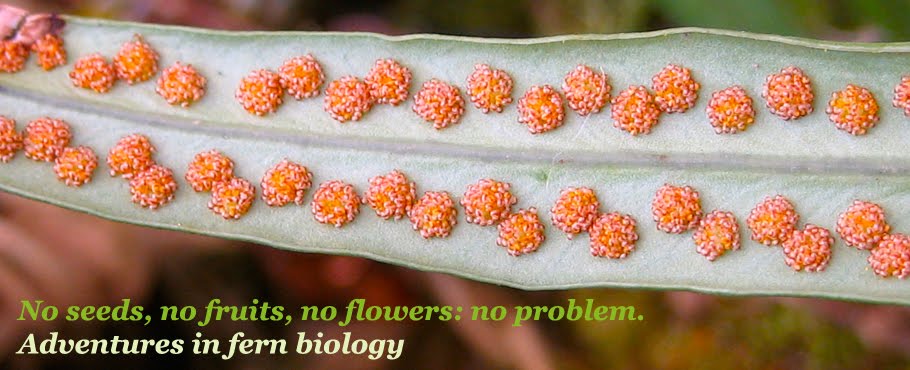Many of you probably appreciate the importance of a good field guidebook, one that is well-illustrated, with the most up-to-date taxonomic information and keys to help you identify unknown entities, as well as tips for telling apart similar-looking species. For guides that we actually plan to take out in the field, in general more-recent is probably better. But I have a special fondness for old field guides for ferns. The main reason, I suspect, is the illustrations. Until the glossy 2nd edition Peterson guide came along, most fern books were exclusively hand-illustrated, and the detailed drawings are lovely. I also appreciate these books because I've seen numerous references by authors in the older fern literature to particular guides that kindled their passion for these plants. I'll just mention a few favorites that I've either bought or covet. PDFs of them are available online through various wonderful sources, like GoogleBooks or the Biodiversity Heritage Library (and clicking the book titles here will take you to one of those two sites; the images are taken out of the PDFs of each book provided at either GoogleBooks or the BHL).
I came across one old reference recently and was inspired to track down and purchase a copy of the book it referred to: W.I. Beecroft's Who's Who Among the Ferns (New York, 1910: Moffat, Yard & Co.). It's pocket-sized, meant for use in the field, and the illustrations are wonderful. Here's an example, a drawing of what is now called Dryopteris cristata:
At the other end of the size (and price, unfortunately for me) spectrum is Edward J. Lowe's 8-volume Ferns: British and Exotic, which was published between 1856 and 1870. The illustrations in this book are stunning, and it includes both black and white and color drawings, like this one of Osmunda cinnamomea. Lowe apparently wrote a series of books about British ferns and "fern allies", judging from the selection of his works that comes up in a search of GoogleBooks. It's really a treasure to have them available this way!
Last but not least, this one is at the top of my to-acquire list: How to Know the Ferns, by Frances Theodora Parsons (New York, 1915: Scribner & Sons). It was written by a women, which is uncommon and wonderful, and has a charming photo at the beginning, of her studying a polypody-covered rock. The other page shown here is from the section on Christmas Fern, Polystichum acrostichoides.
This brief listing doesn't even scratch the surface of wonderful old fern guidebooks, and PDFs of these and many more can be found online now simply by exploring OpenLibrary, GoogleBooks, the Biodiversity Heritage Library, and other similar sites. I encourage you to take advantage of these fantastic resources! It's a nice way to prepare for spring.



.jpg)
+1.jpg)


